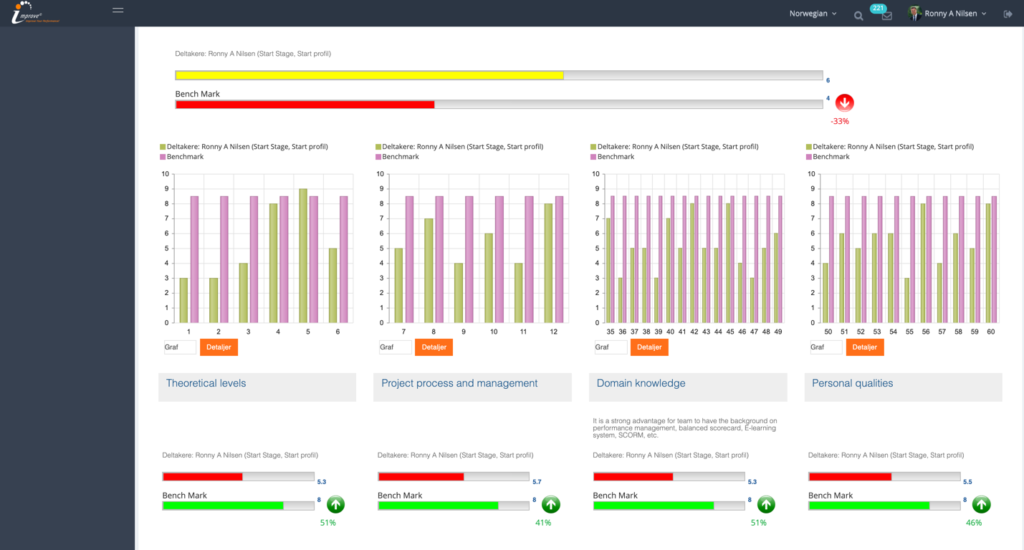Training needs

Training Analysis (sometimes called Training Needs Analysis (TNA)) is the process of identifying the gap in employee training and related training needs.
Training Need Analysis (TNA) is the process of identifying the gap between employee training and needs of training. Training needs analysis is the first stage in the training process and involves a series of steps that reveal whether training will help to solve problem which has been identified. Training can be described as “the acquisition of skills, concepts or attitudes that result in improved performance within the job environment”. Training needs analysis looks at each side of operational area of job so that the concepts and attitudes of the human elements of a system can be effectively identified and appropriate training can be specified.
Training needs analysis is most often used as part of the system development process. Due to the close tie between the design of the system and the training required, in most cases it runs alongside the development to capture the training requirements.needs additional citations for verification
How do you define training needs?
Training needs analysis refers to the process of identifying and assessing employees’ training/developing needs within a company. Training needs analysis operates on three levels: organizational, team and individual. Most commonly used methods include interviews with employees, surveys and focus group discussions.
Achieving desired business results and building sustainable growth depends on how employees are contributing towards larger business goals. For this, employees need to have clarity on the expectations from their roles, and how their contributions will be measured and rewarded. Effective Performance Management System (PMS) brings this clarity and drives employees to deliver their best performance and translate business strategy into results.

What are the training needs of employees?
The Top 10 training needs of today’s employees are:
- Leadership development (selected by 65% of respondents).
- Interpersonal skills training (59%).
- Communication skills training (53%).
- Managing change (52%).
- Teamwork (52%).
- Management skills training (51%).
- Problem solving (45%).
- Customer service (41%).
- Retaining employees (40%).
- Creativity and innovation (36%).
Improve System
Improve System is a digital platform to manange learning, training and performance evaluations and its a measurement of delivered output expected from an individual or a group of individuals within a time frame under specific conditions.
We recognize that Improve Systems cannot be just an annual postmortem and it needs to be a dashboard which helps executives to direct their efforts towards achieving goals. It helps executives in differentiating high performers from low performers and takes decisions on rewards and promotions. It also identifies training & developmental needs of employees. Improve Systems creates performance driven culture in the organization.
We assist organizations to design (re-design) and implement Improve Systems in line with the overall organization’s goal. Our consultants and trainers emphasizes on following four fundamental elements of performance management systems:
Objectivity: It should provide objective measurement of individual’s performance against targets set in the beginning of the year
Accountability: It should be uniform and consistent across the organization with clear linkages to other HR processes & systems such as Promotion, Training and Development and Succession Planning
Transparency: It should provide clarity to individual’s and cascade accountability right from top to the last level in the organization by way of assigning responsibilities to every individual
Implementation: It should be simple and easy to implement and practice
We believe Improve Systems has two parts; one is appropriate design and second is proper implementation. Improve Systems is not only a HR process but is a business, learning, training and performance management process and it is very important that every employee irrespective of levels understands it and effectively practices it.
As an implementation strategy we conduct Improve Systems workshops to help managers to –
Focus on the Performance Management process and the expected outcome rather than on the Appraisal
Set SMART goals for every employee
Motivate employees by sharing their strengths along with highlighting their shortcomings in a way which they can see as opportunity for improvement rather than failure.
Create an open communication culture.
Why is it important to identify training needs?
It is important to take the time to investigate the reason for the training request. … In both cases, the goal of the training needs assessment is to identify performance issues that can be remedied through the introduction, practice, or reinforcement of specific and measurable knowledge and/or skill sets.
What are the main objectives of training?
An immediate objective of training is to give employees the skills they need to become better workers, resulting in financial gain. Other objectives include creating a supportive workplace, so employees know they are valued and feel more satisfaction in their jobs.

